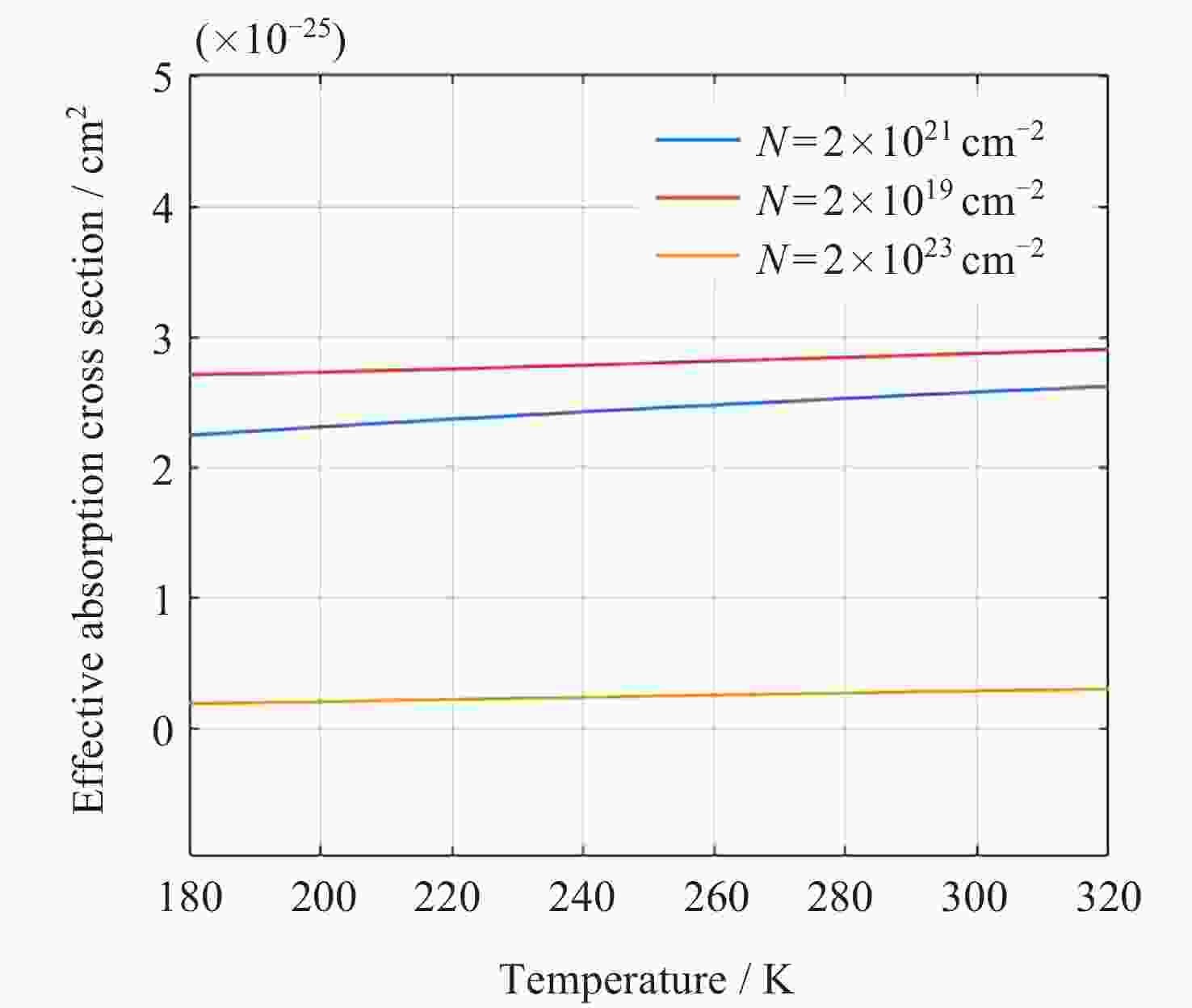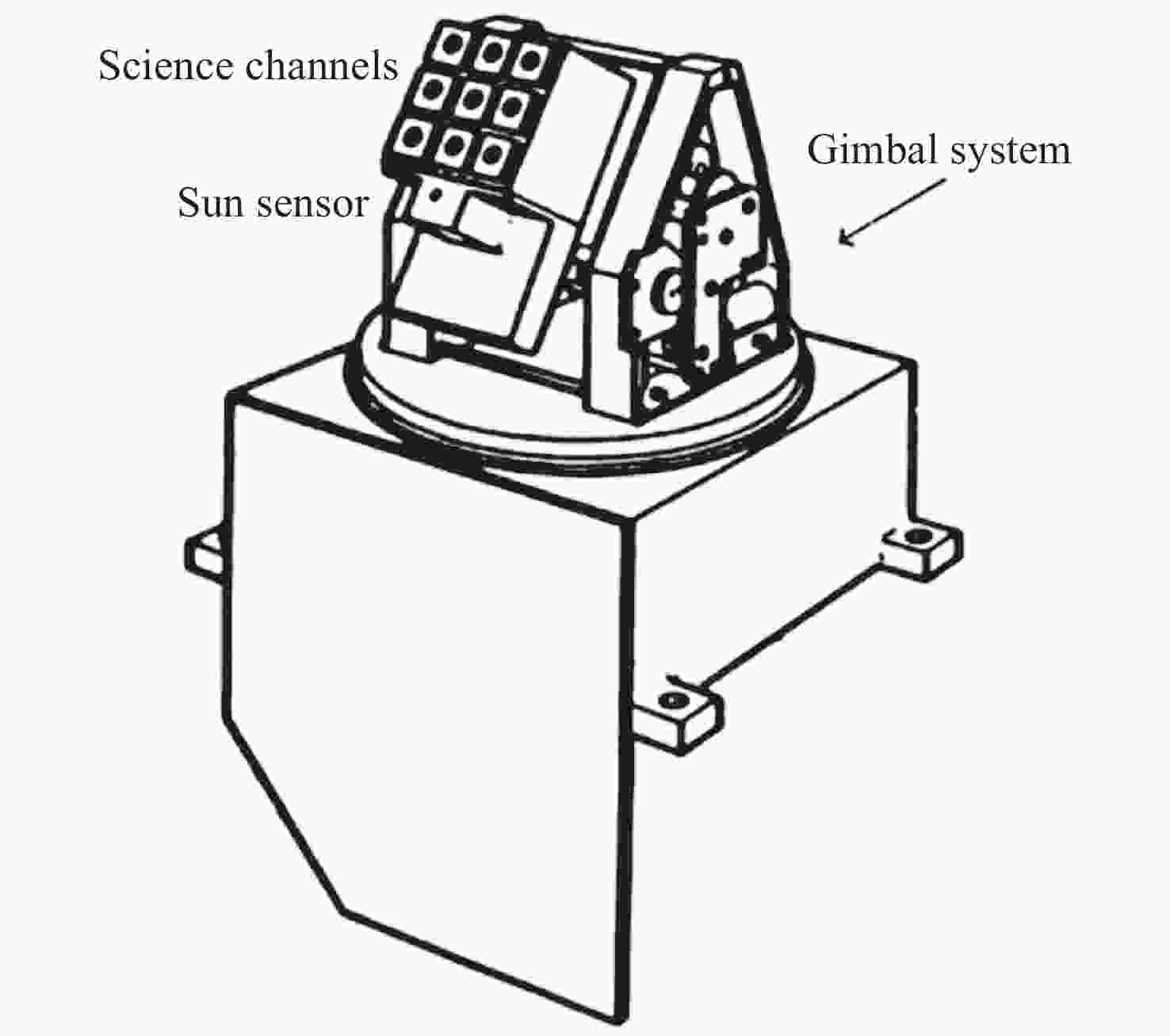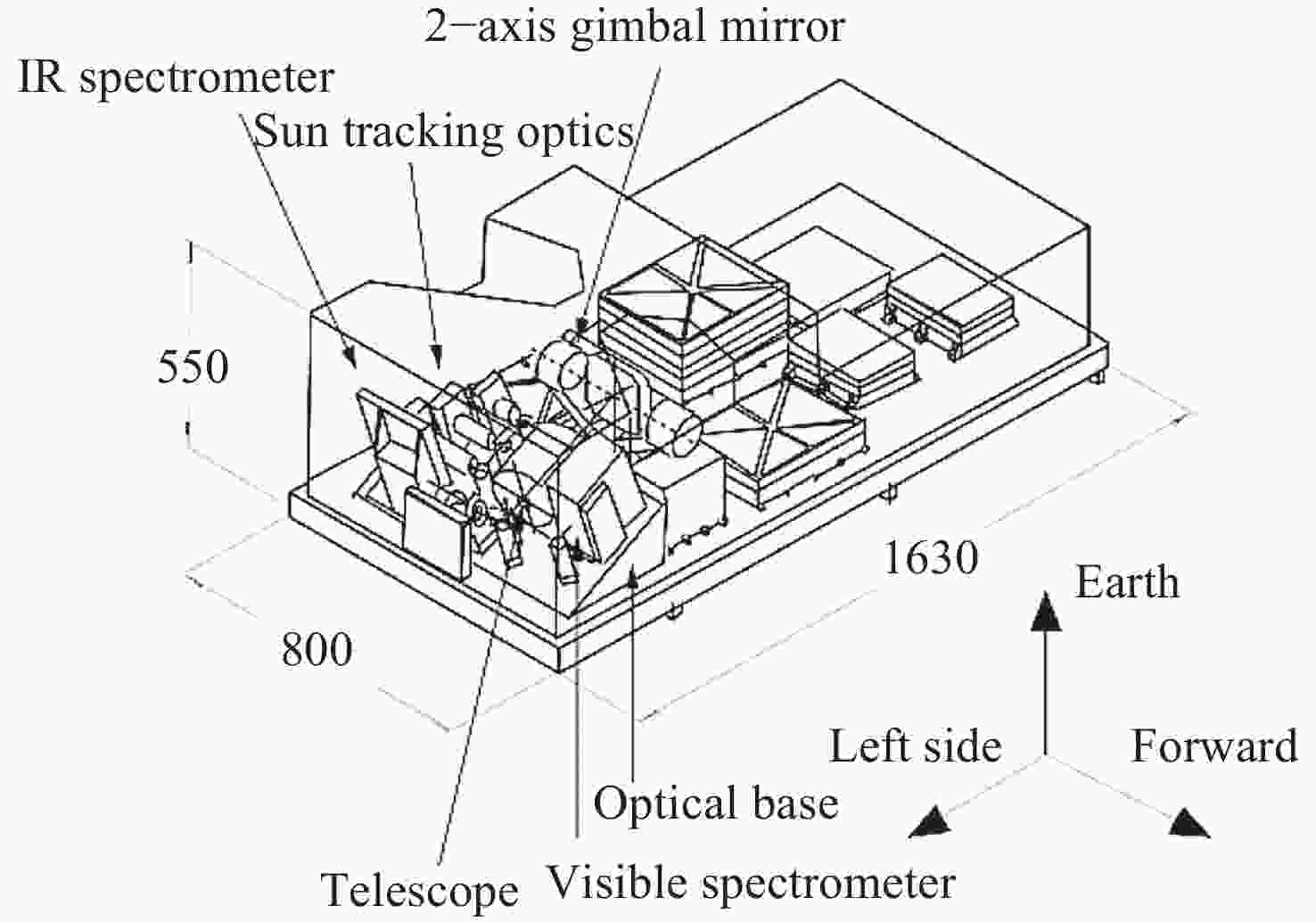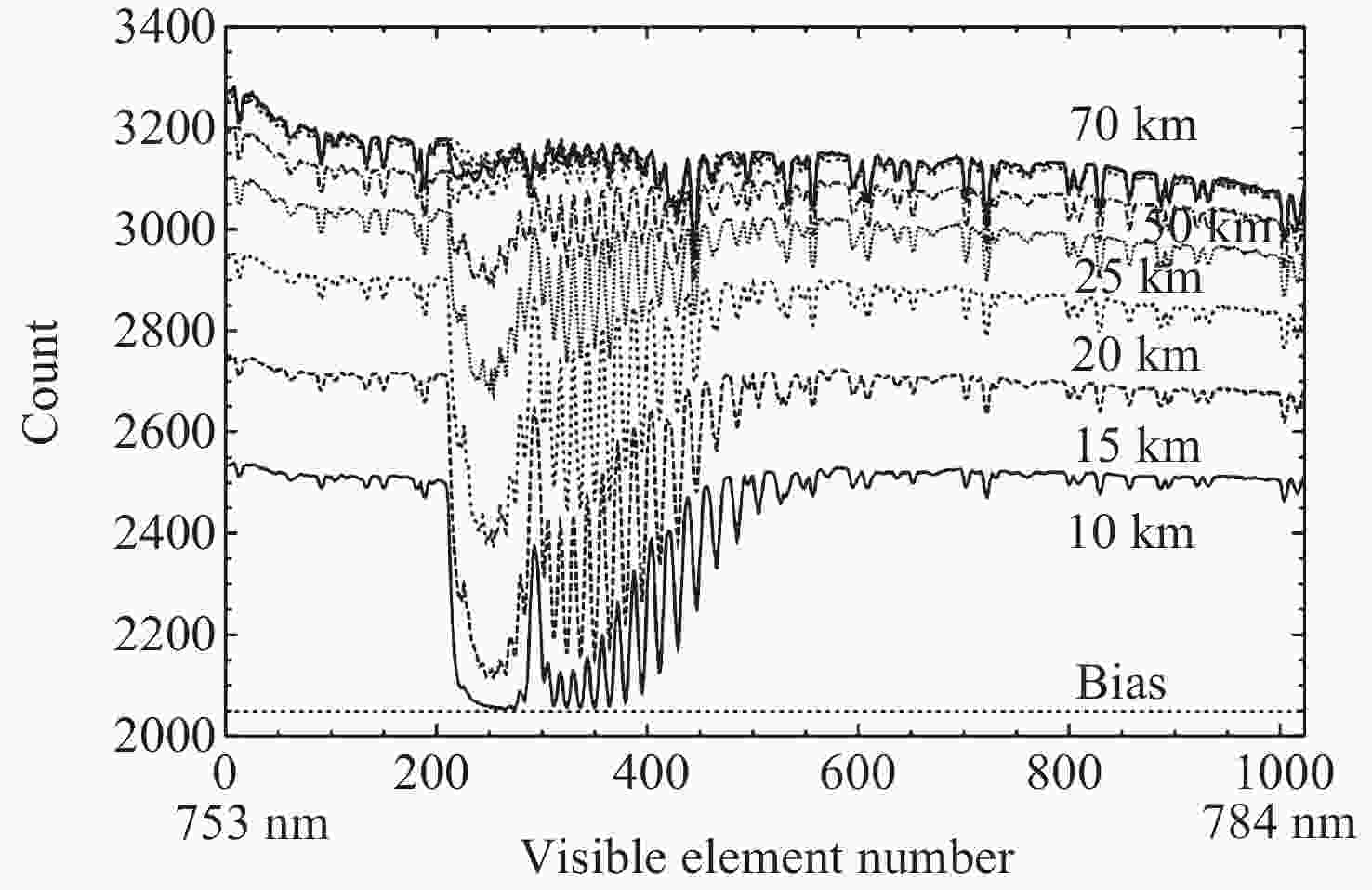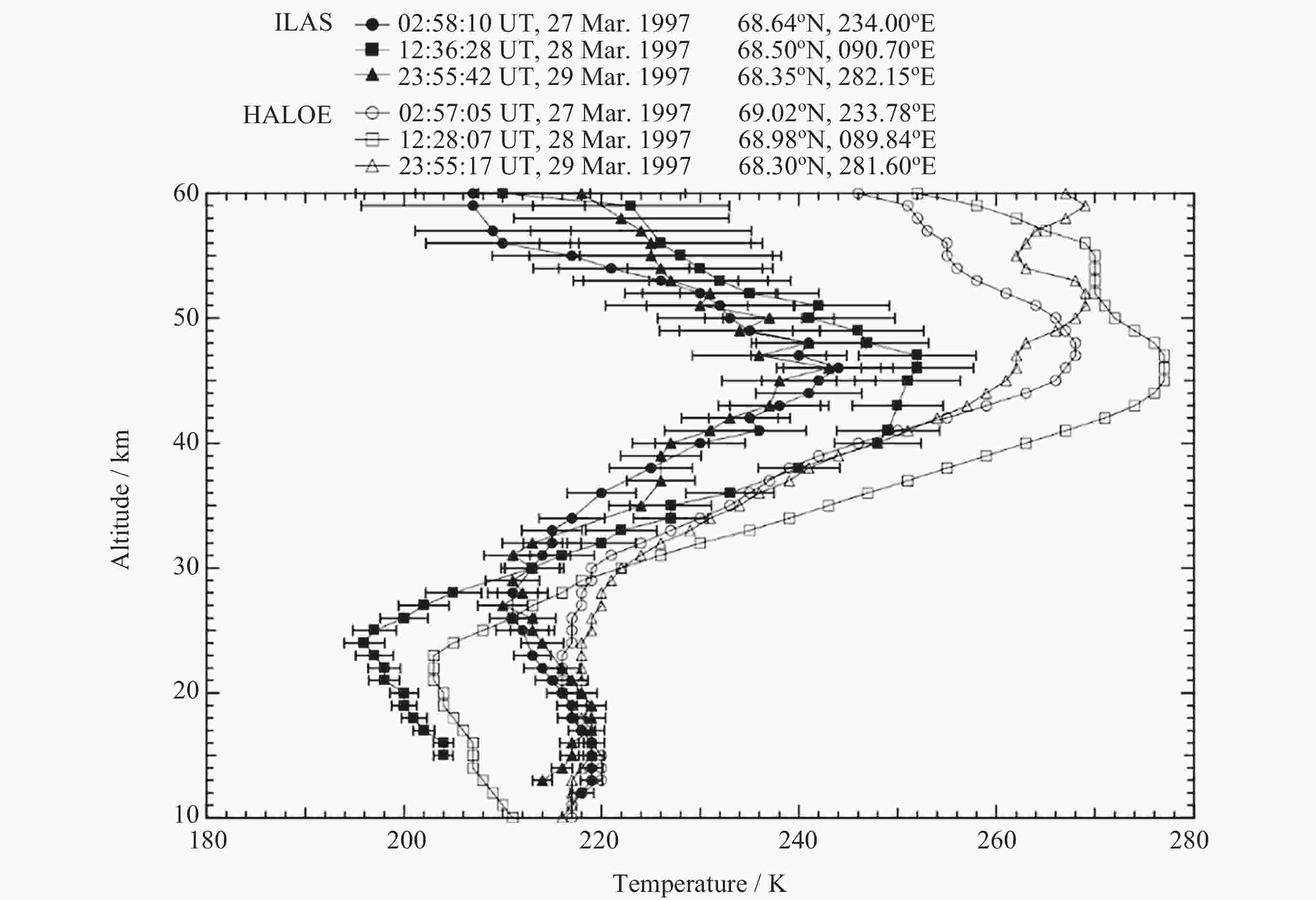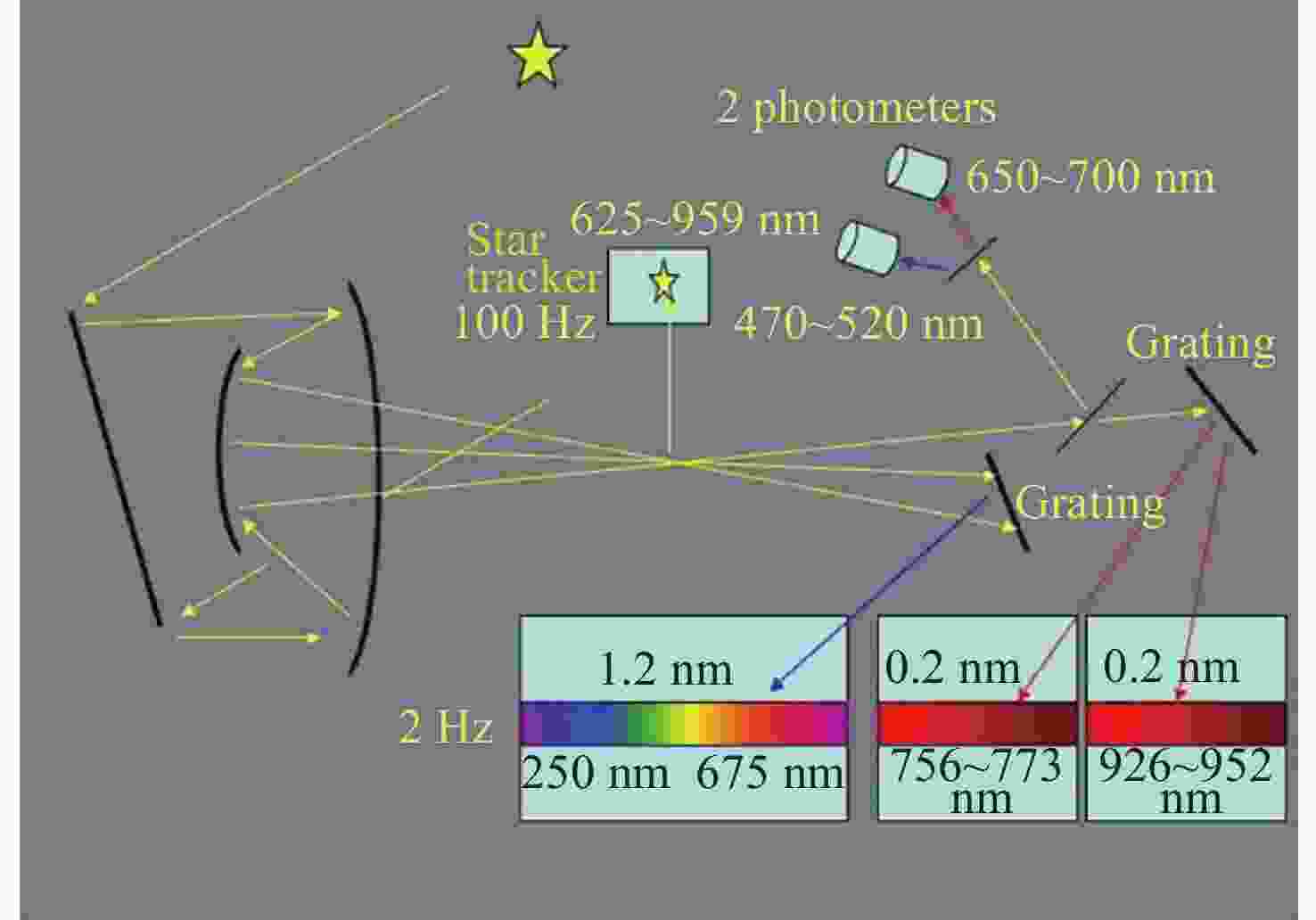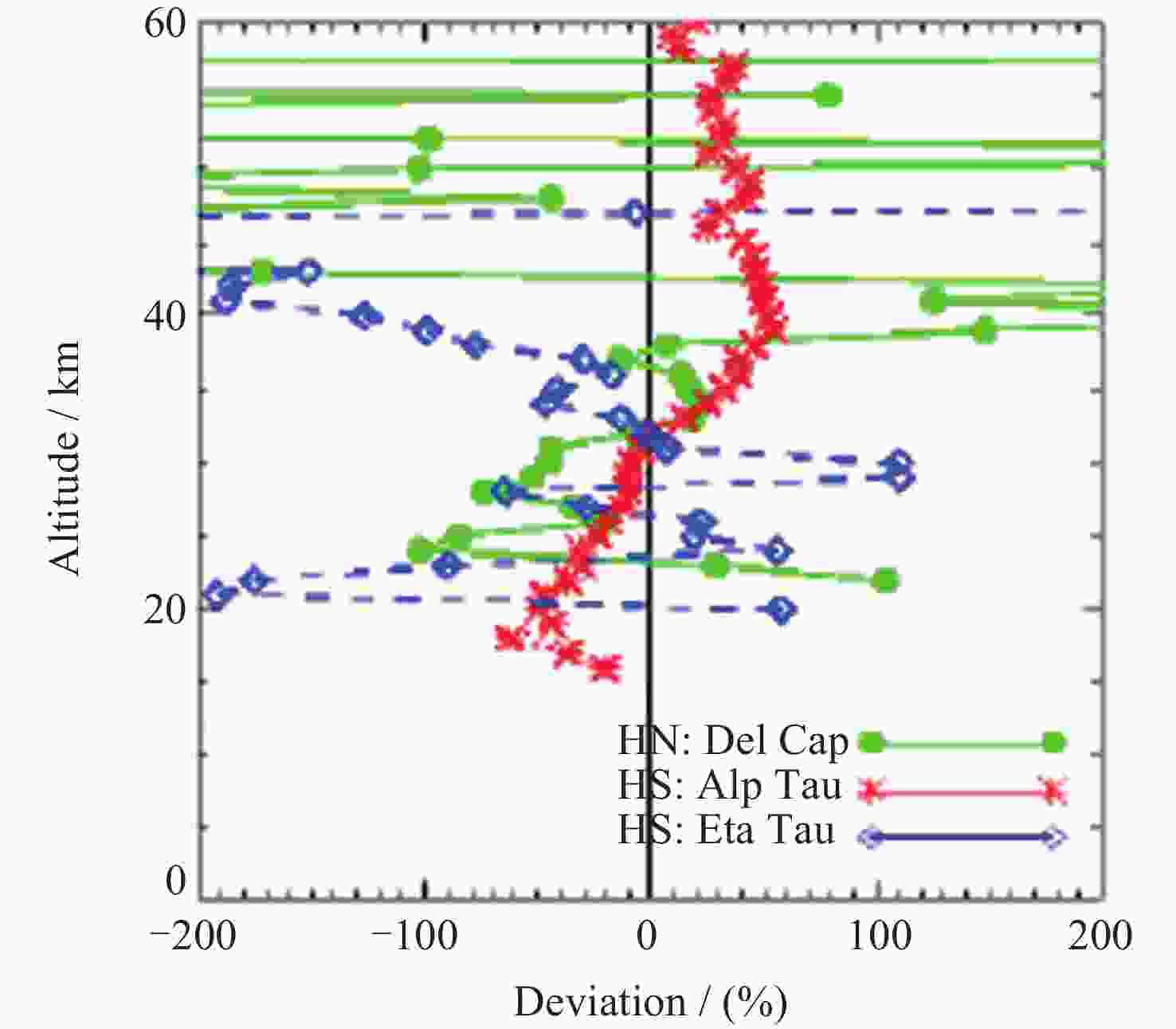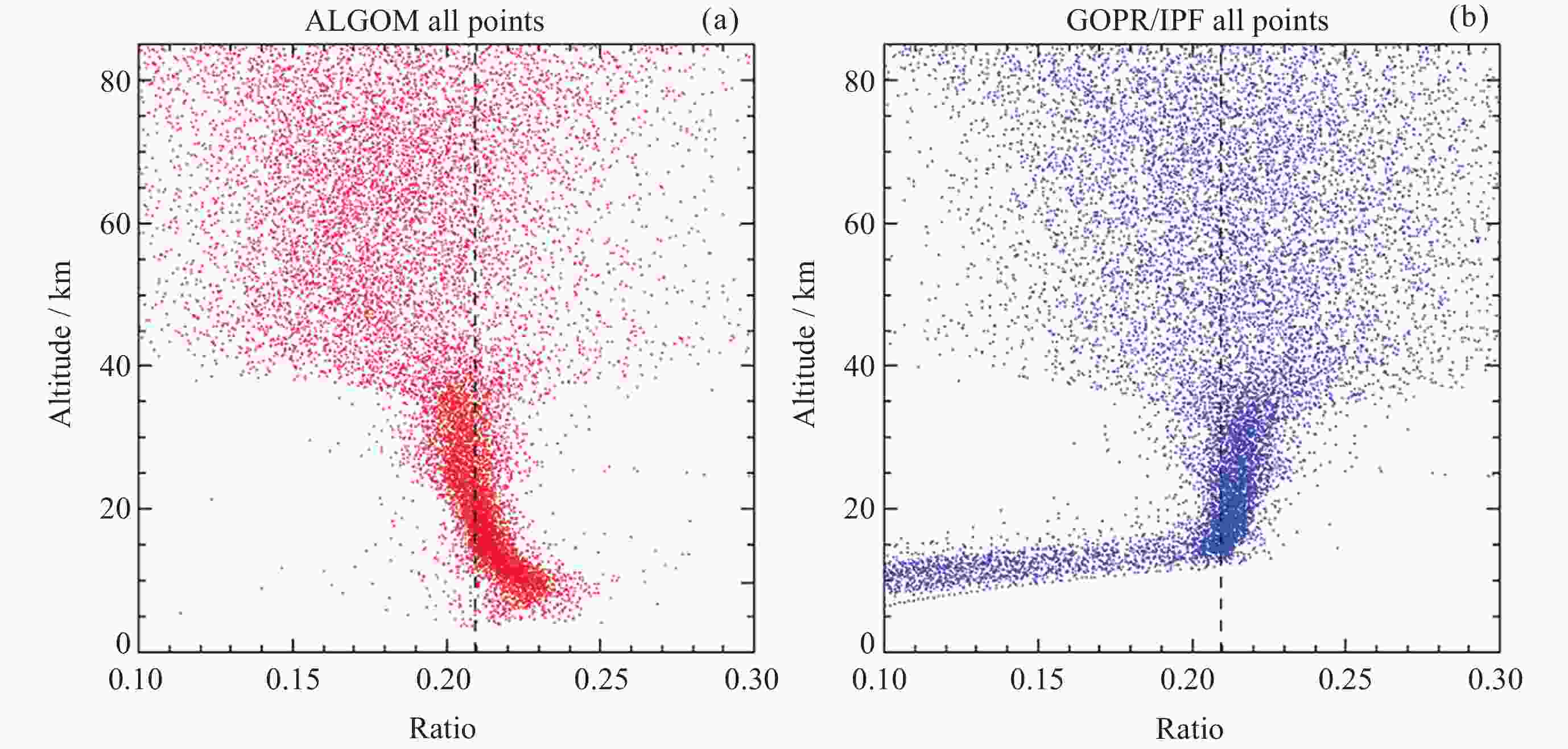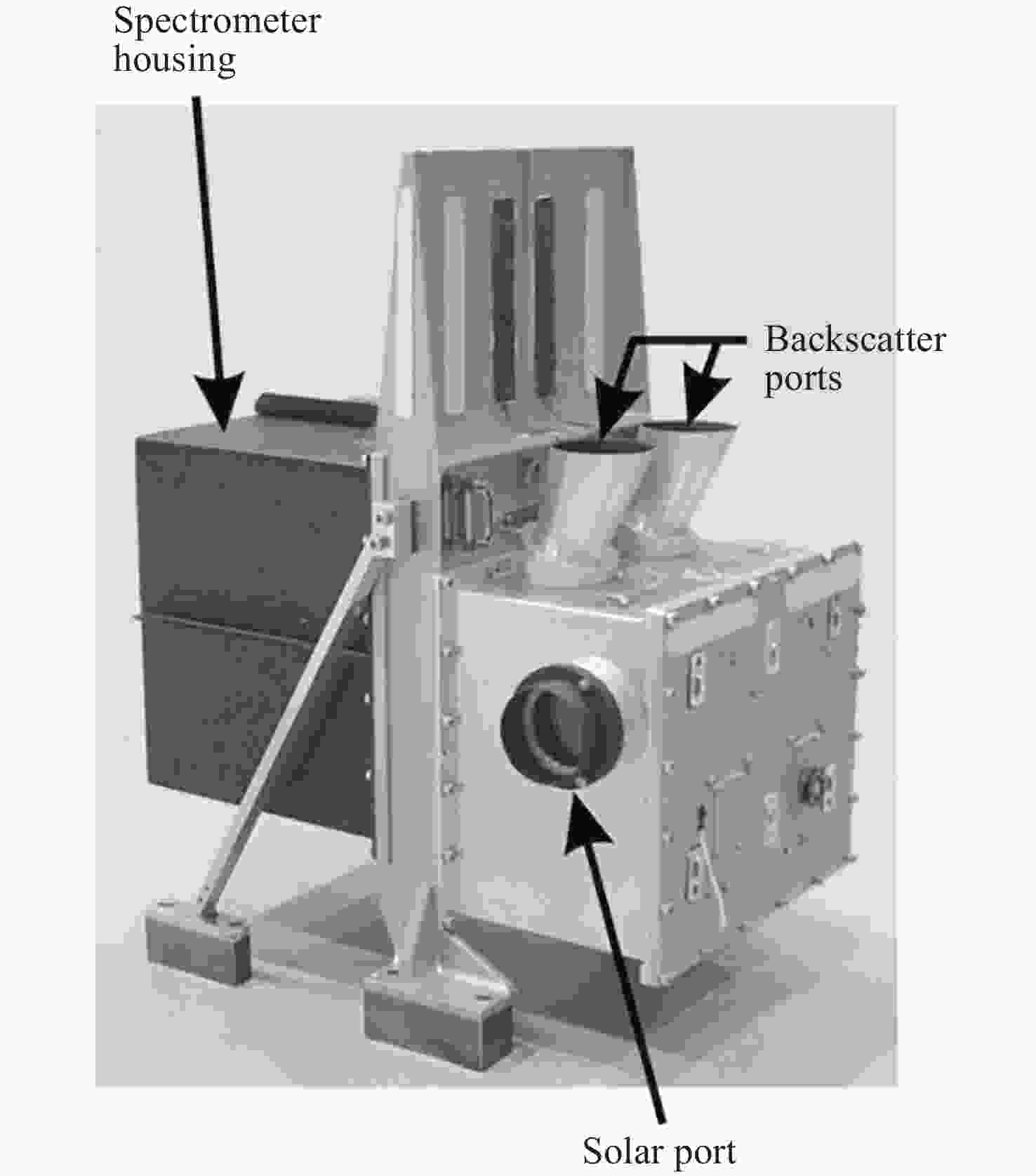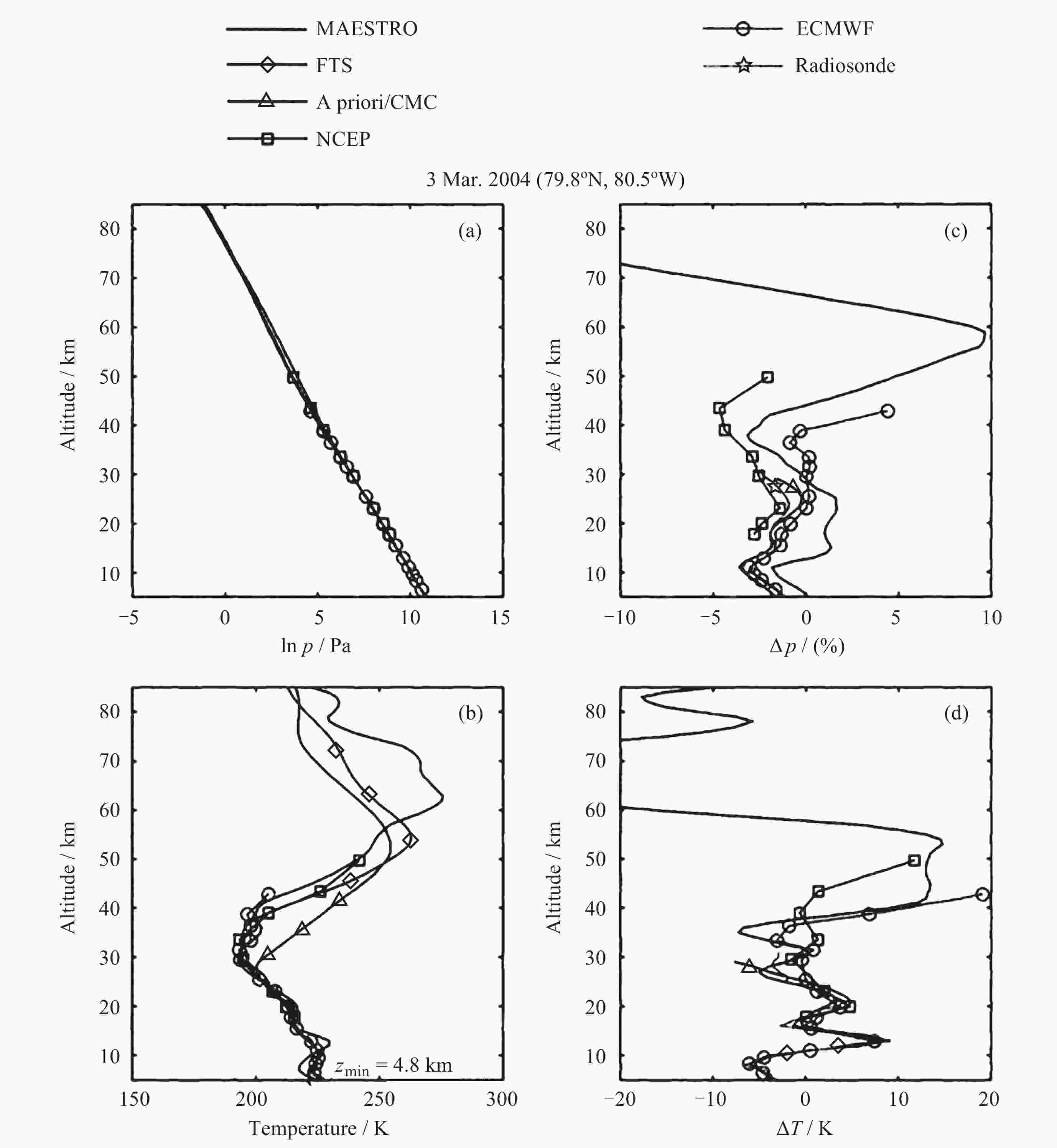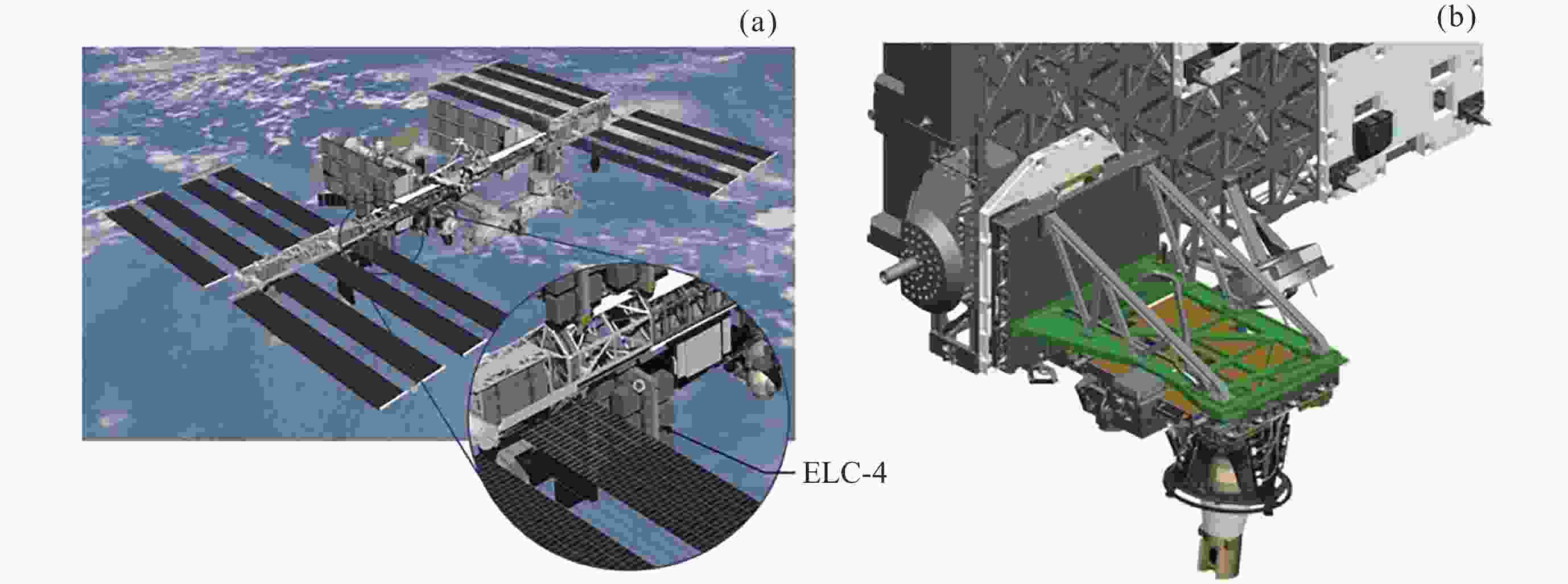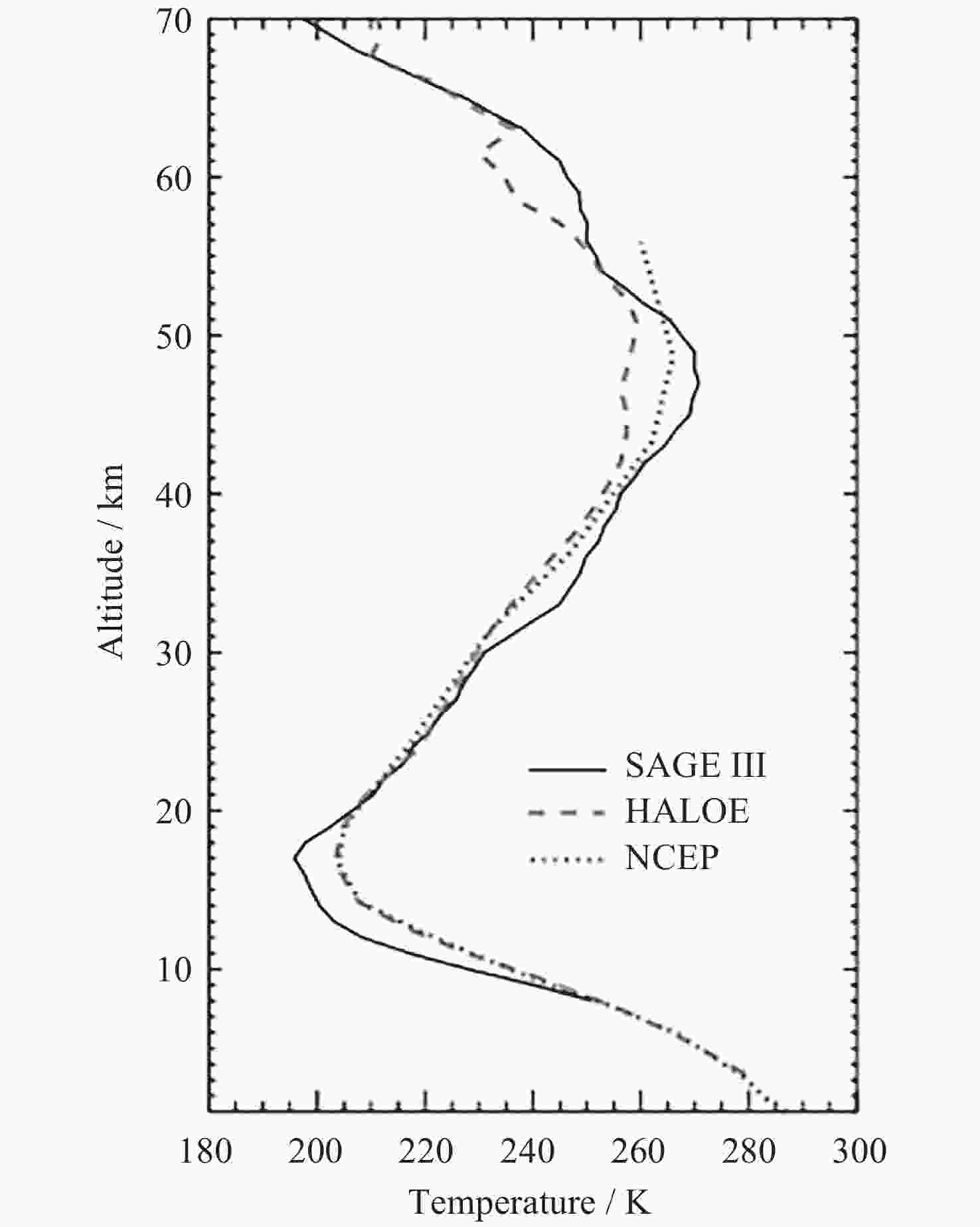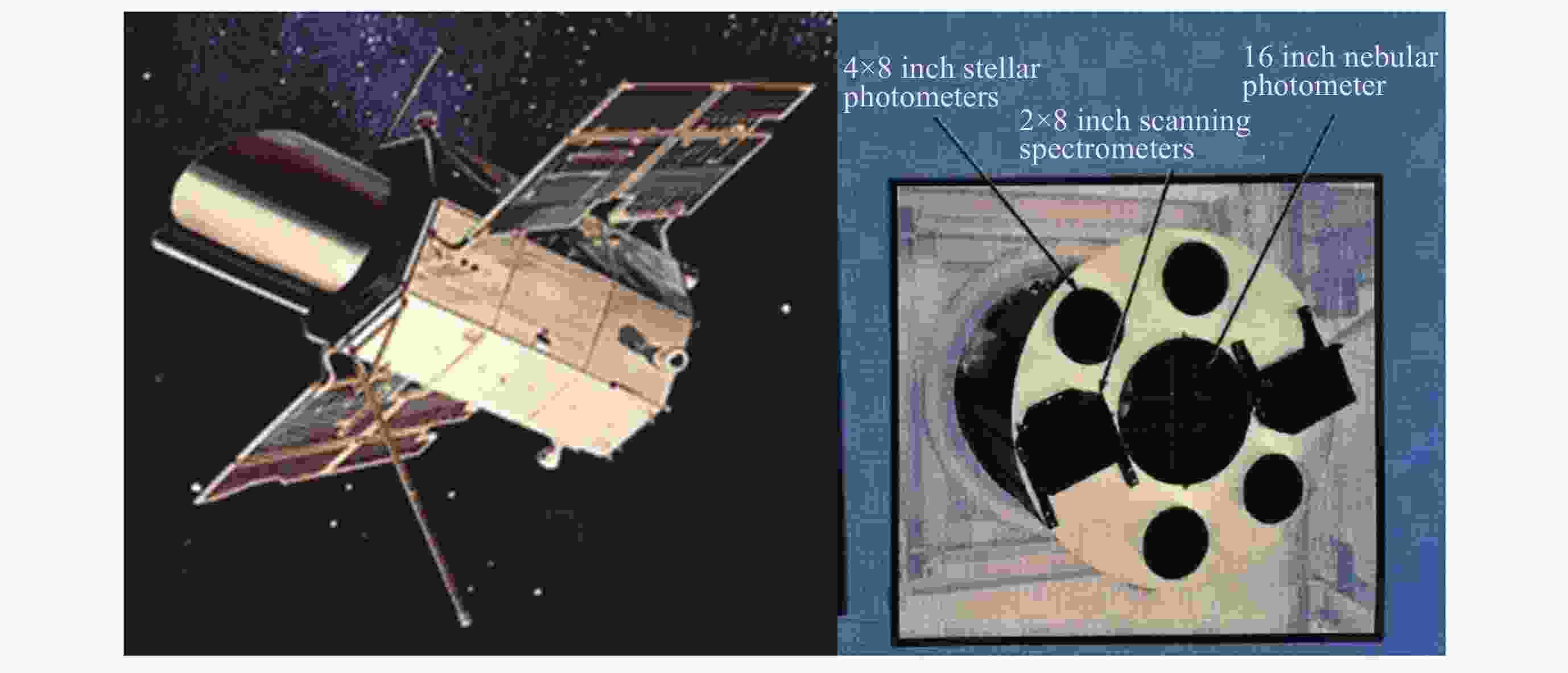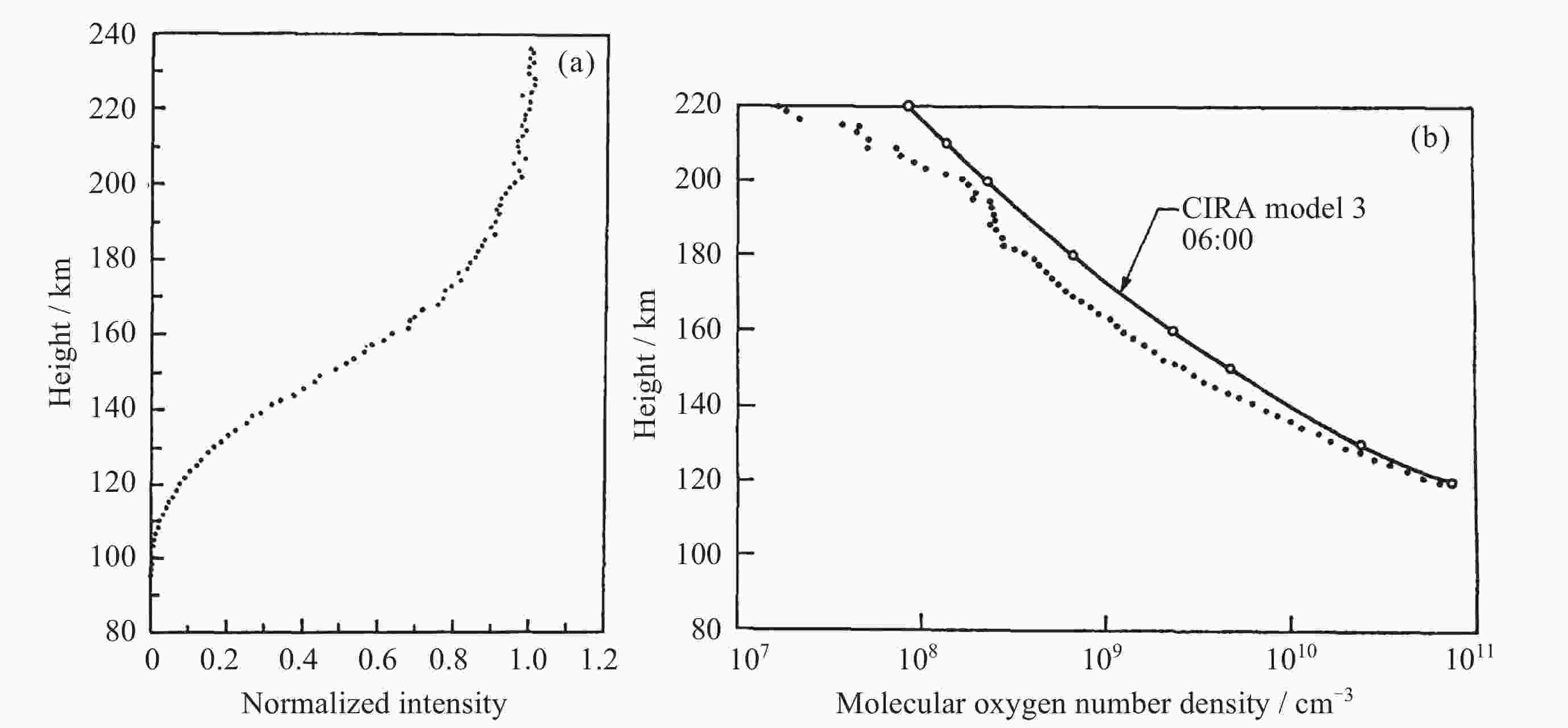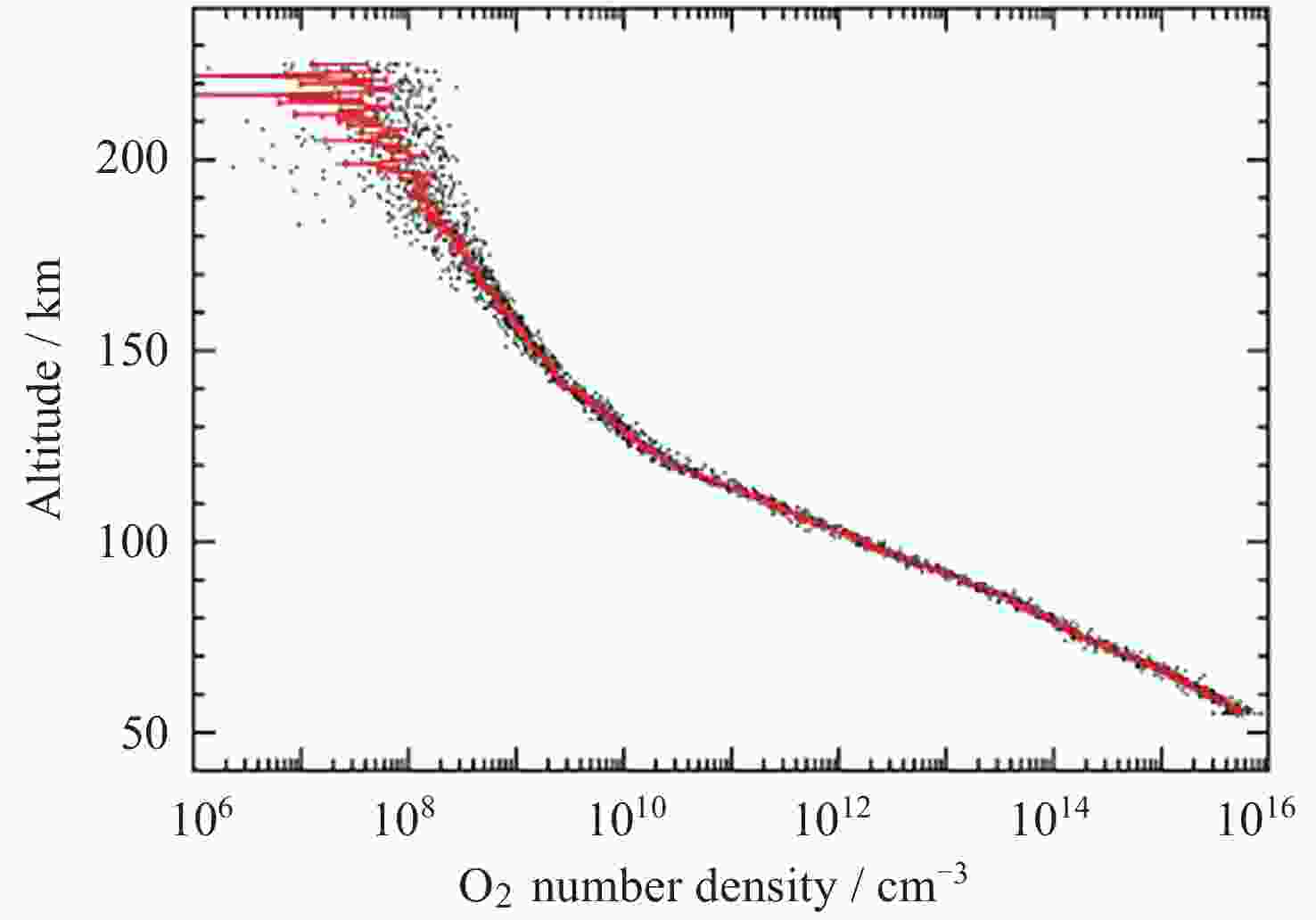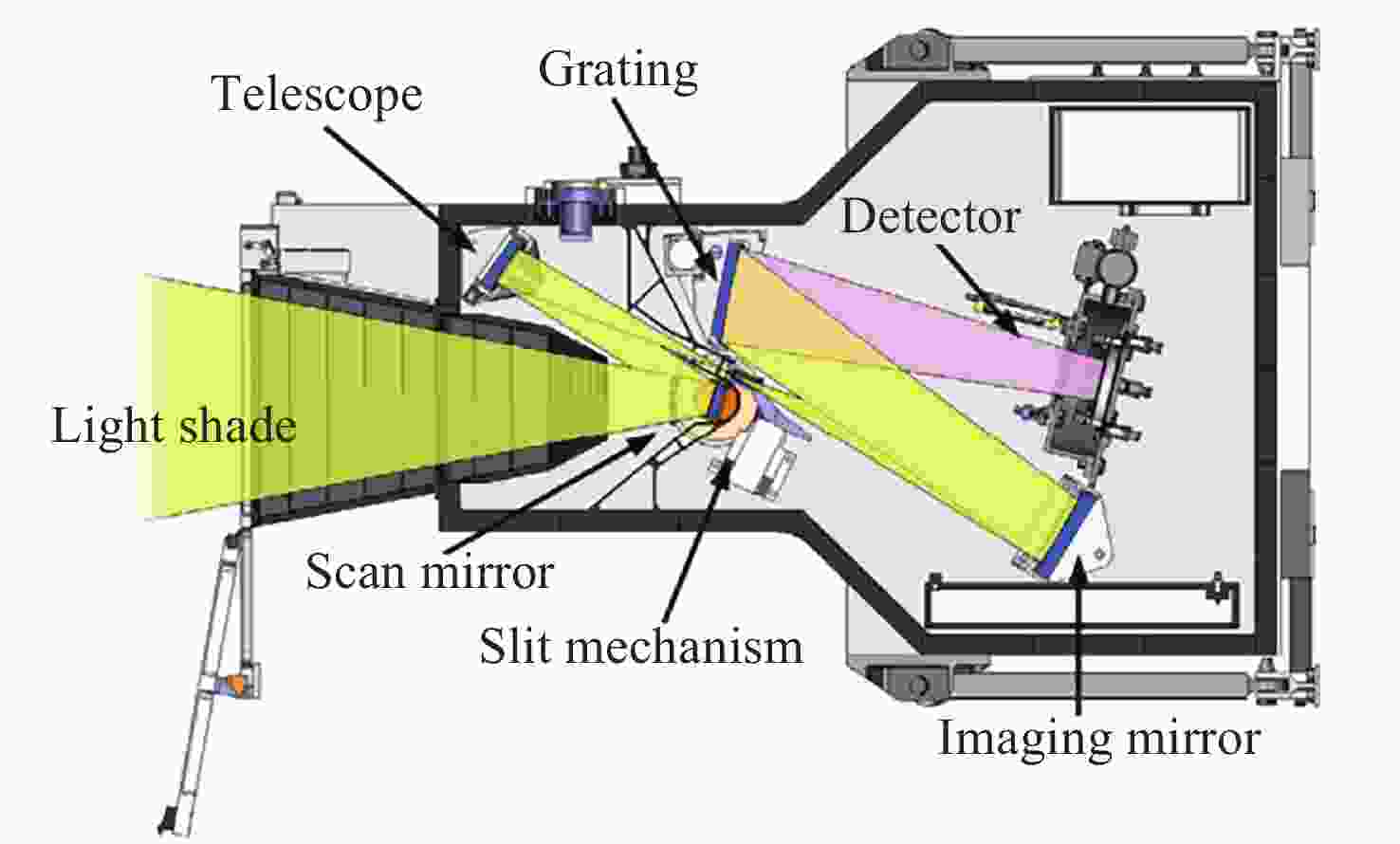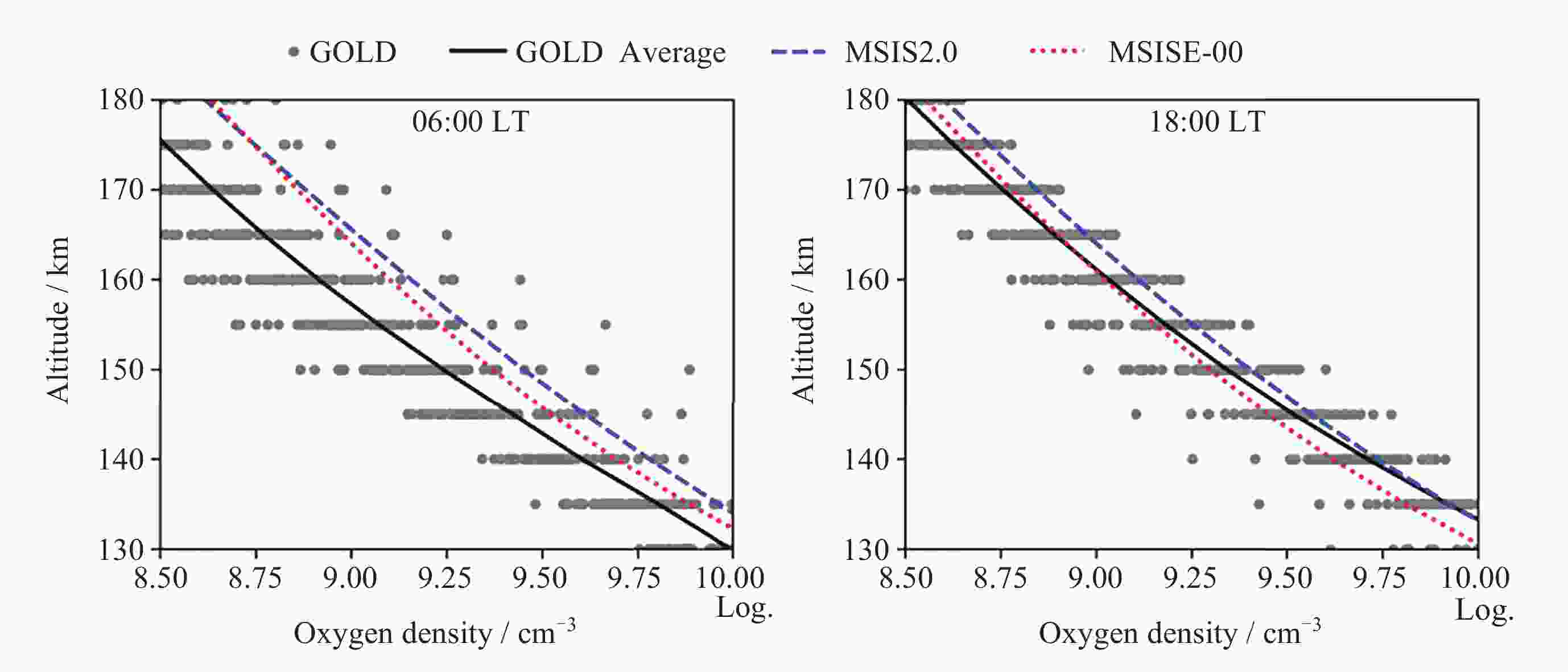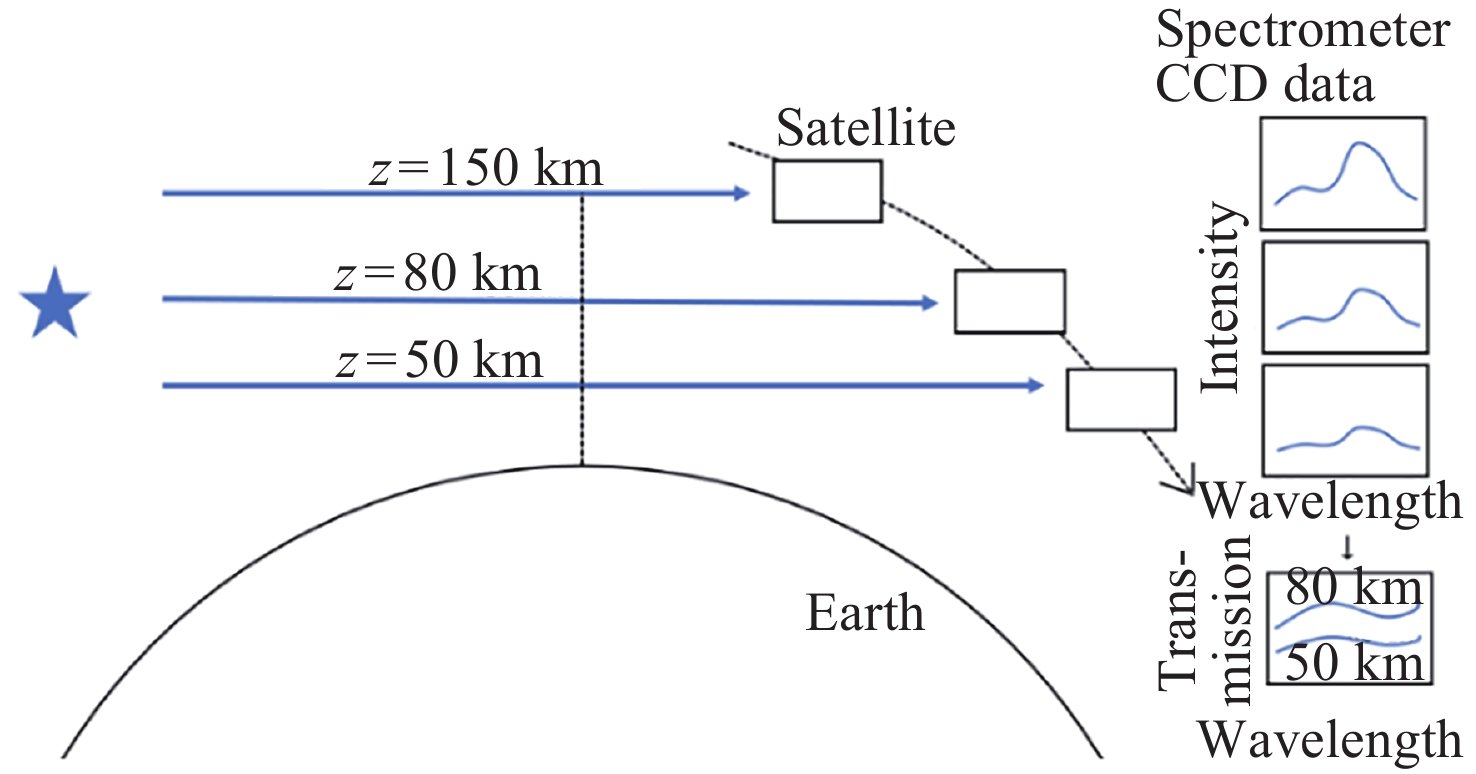Applications and Advances of Stellar Occultation Technique in Atmospheric Oxygen Density Measurement
-
摘要: 临近空间大气氧气密度是研究地球大气结构、热力学特性和空间天气过程的关键参数, 对研究大气建模预报、空间目标轨道预测等具有重要科学和应用价值. 然而, 传统探测手段在垂直分辨率、全球覆盖和长期监测方面存在局限. 恒星掩星技术作为一种被动遥感方法, 通过分析日光或星光穿过大气时的吸收特征, 为氧气密度探测提供了解决方案. 该技术已发展出140~160 nm紫外舒曼龙格吸收带与760 nm红外A吸收带的双波段探测体系. 其紫外吸收带凭借强吸收特性适用于130 km以上高层大气探测, 而红外A波段通过高分辨率光谱分析实现了10~85 km范围内氧气密度、温度及气压的同步反演. 然而, 温度敏感性、星源信号强度等挑战仍需突破. 本文首次系统比较了紫外与红外波段在氧气探测中的互补优势, 分析了从OAO-2到GOLD等多代载荷的技术演进, 并对未来发展方向进行了展望. 该综述不仅为大气遥感研究提供了技术参考, 还揭示了双波段协同探测潜力, 为下一代大气探测任务的设计指明方向.Abstract: Density of atmospheric oxygen in the near space is a key parameter for studying the Earth’s atmospheric structure, thermodynamic properties, and space weather processes, offering significant scientific and practical value for studying atmospheric modeling and space object orbit prediction. However, traditional observation methods have limitations in vertical resolution, global coverage, and long-term monitoring. Solar and stellar occultation, as a passive remote sensing technique, provides a unique solution for oxygen density measurement by analyzing the absorption features of sunlight or starlight passing through the atmosphere. This technique has developed a dual-band detection system operating in the ultraviolet Schumann-Runge absorption bands (140~160 nm) and the near-infrared A-band (760 nm). The ultraviolet band, with its strong absorption characteristics, is suitable for probing the upper atmosphere above 130 km, while the infrared A-band enables simultaneous retrieval of oxygen density, temperature, and pressure within the 10~85 km range through high-resolution spectral analysis. Nevertheless, challenges such as temperature sensitivity and effects of lower atmospheric turbulence still need to be addressed. This paper for the first systematically compares the complementary advantages of ultraviolet and infrared bands in oxygen detection, outlines the technical evolution across multiple generations of instruments from OAO-2 to GOLD, and discusses future development directions. Not only does this review provide a technical reference for atmospheric remote sensing research, but it also highlights the potential of dual-band synergistic detection, offering guidance for the design of next-generation atmospheric observation missions.
-
Key words:
- Stellar occultation /
- Oxygen density /
- Atmospheric remote sensing /
- Near space
-
表 1 当前实施过氧气探测研究的掩星仪
Table 1. Occultation instruments that have conducted oxygen detection
探测波段 载荷名称 搭载卫星 实施机构 实施
年份轨道 探测方式 光谱分
辨率/nm其他主要探测内容 氧气探测高度/km 垂直分
辨率/km氧分子红外A吸收带 POAM II/III SPOT 3/4 NASA 1993/
1998太阳同步轨道, 倾角98°, 822 km 掩日光
度计- 气溶胶,
O3, H2O, NO220~60 1~2 ILAS ADEOS MOEJ 1996 太阳同步轨道, 倾角98°, 800 km 掩日光
谱仪0.17 气溶胶, O3, H2O, 氮氧化物 10~60 1 GOMOS ENVISAT ESA 2002 太阳同步轨道, 倾角99°, 785 km 掩星光
谱仪0.2 O3, H2O, 氮氧化物, 气溶胶 15~80 1 MAESTRO SCISAT CSA 2003 近地轨道, 倾角74°, 650 km 低分辨率掩日光谱仪 2 O3, H2O, 氮氧化物 30~80 1~2 SAGE III ISS NASA 2017 近地轨道, 倾角52°, 420 km 掩日与掩
月光谱仪1.4 气溶胶, O3, H2O, 氮氧化物 10~85 1 氧分子紫外SR吸
收带Spectrometers OAO-2 NASA 1968 近地轨道, 倾角35°, 750 km 掩星光度计与光谱仪 0.5 天体光谱, 星际介质, O3 120~200 1.5 UVISI MSX JHU 1996 近地轨道, 倾角99°, 900 km 掩星光
谱仪0.5 空间碎片, 天体光谱, 气辉, 气溶胶, O3 130~200 1.5 GOLD SES-14 UCF 2018 地球静止轨道, 定点47.5° W, 35786 km 掩星光
谱仪0.2 电子密度, 气辉, O, N2, NO 130~200 5~10 -
[1] HAYS P B, ROBLE R G. Stellar spectra and atmospheric composition[J]. Journal of the Atmospheric Sciences, 1968, 25(6): 1141-1153 doi: 10.1175/1520-0469(1968)025<1141:SSAAC>2.0.CO;2 [2] FRIEDMAN H, LICHTMAN S W, BYRAM E T. Photon counter measurements of solar X-rays and extreme ultraviolet light[J]. Physical Review, 1951, 83(5): 1025-1030 doi: 10.1103/PhysRev.83.1025 [3] HAYS P B, ROBLE R G. Stellar occultation measurements of molecular oxygen in the lower thermosphere[J]. Planetary and Space Science, 1973, 21(3): 339-348 doi: 10.1016/0032-0633(73)90032-9 [4] PITTS M C, THOMASON L W. SAGE III temperature and pressure retrievals: initial results[C]//Proceedings of SPIE 4882, Remote Sensing of Clouds and the Atmosphere VII. Crete: SPIE, 2003: 62-70. DOI: 10.1117/12.463004 [5] SUGITA T, YOKOTA T, NAKAJIMA T, et al. Temperature and pressure retrievals from O2 A-band absorption measurements made by ILAS: retrieval algorithm and error analyses[C]//Proceedings of SPIE 4150, Optical Remote Sensing of the Atmosphere and Clouds II. Sendai: SPIE, 2001: 94-105. DOI: 10.1117/12.416949 [6] GREER K R, LASKAR F, EASTES R W, et al. The molecular oxygen density structure of the lower thermosphere as seen by GOLD and models[J]. Geophysical Research Letters, 2022, 49(8): e2022GL098800 doi: 10.1029/2022GL098800 [7] LI Z, WU X C, TU C, et al. Research on stellar occultation detection with bandpass filtering for oxygen density retrieval[J]. Remote Sensing, 2023, 15(14): 3681 doi: 10.3390/rs15143681 [8] LI Z, WU X C, TU C, et al. Oxygen and air density retrieval method for single-band stellar occultation measurement[J]. Remote Sensing, 2024, 16(11): 2006 doi: 10.3390/rs16112006 [9] ZHANG S M, WU X C, SUN M C, et al. Using onion-peeling method to inverse ozone density based on the stellar occultation technology in the near space region[J]. Spectroscopy and Spectral Analysis, 2022, 42(1): 203-209 (张斯敏, 吴小成, 孙明晨, 等. 星光掩星剥洋葱法反演臭氧密度[J]. 光谱学与光谱分析, 2022, 42(1): 203-209 doi: 10.3964/j.issn.1000-0593(2022)01-0203-07ZHANG S M, WU X C, SUN M C, et al. Using onion-peeling method to inverse ozone density based on the stellar occultation technology in the near space region[J]. Spectroscopy and Spectral Analysis, 2022, 42(1): 203-209 doi: 10.3964/j.issn.1000-0593(2022)01-0203-07 [10] STAMNES K. RADIATION TRANSFER IN THE ATMOSPHERE | Ultraviolet radiation[M]//NORTH G R, PYLE J, ZHANG F Q. Encyclopedia of Atmospheric Sciences. 2nd ed. London: Academic Press, 2015: 37-44 [11] BEVILACQUA R M, SHETTLE E P, HORNSTEIN J S, et al. Polar ozone and aerosol measurement experiment (POAM-II)[C]//Proceedings of SPIE 2266, Optical Spectroscopic Techniques and Instrumentation for Atmospheric and Space Research. San Diego: SPIE, 1994: 374-382 [12] LUCKE R L, KORWAN D R, BEVILACQUA R M, et al. The Polar Ozone and Aerosol Measurement (POAM) III instrument and early validation results[J]. Journal of Geophysical Research: Atmospheres, 1999, 104(D15): 18785-18799 doi: 10.1029/1999JD900235 [13] LUMPE J D, BEVILACQUA R M, HOPPEL K W, et al. POAM II retrieval algorithm and error analysis[J]. Journal of Geophysical Research: Atmospheres, 1997, 102(D19): 23593-23614 doi: 10.1029/97JD00906 [14] LUMPE J D, BEVILACQUA R M, HOPPEL K W, et al. POAM III retrieval algorithm and error analysis[J]. Journal of Geophysical Research: Atmospheres, 2002, 107(D21): 4575 [15] NAKAJIMA H, SUZUKI M, MATSUZAKI A, et al. Characteristics and performance of the Improved Limb Atmospheric Spectrometer (ILAS) in orbit[J]. Journal of Geophysical Research: Atmospheres, 2002, 107(D24): 8213 [16] KYRÖLÄ E, TAMMINEN J, LEPPELMEIER G W, et al. GOMOS on Envisat: an overview[J]. Advances in Space Research, 2004, 33(7): 1020-1028 doi: 10.1016/S0273-1177(03)00590-8 [17] Finnish Meteorological Institute. GOMOS Algorithm Theoretical Basis Document [R]. Helsinki: Finnish Meteorological Institute, 2012 [18] BLANOT L, BERTAUX J, HAUCHECORNE A, et al. ALGOM: improvements for GOMOS O2 and H2O Profiles Retrieval [R]. Sophia-Antipolis: ACRI-ST, 2017 [19] BAZUREAU A, GOUTAIL F. Validation of ENVISAT products using POAM III O3, NO2, H2O and O2 Profiles[R]. Italy: ESA Special Publication, 2003 [20] MCELROY C T, NOWLAN C R, DRUMMOND J R, et al. The ACE-MAESTRO instrument on SCISAT: description, performance, and preliminary results[J]. Applied Optics, 2007, 46(20): 4341-4356 doi: 10.1364/AO.46.004341 [21] NOWLAN C R. Atmospheric Temperature and Pressure Measurements from the ACE-MAESTRO Space Instrument[D]. Toronto: University of Toronto, 2006 [22] NOWLAN C R, MCELROY C T, DRUMMOND J R. Measurements of the O2 A- and B-bands for determining temperature and pressure profiles from ACE-MAESTRO: forward model and retrieval algorithm[J]. Journal of Quantitative Spectroscopy and Radiative Transfer, 2007, 108(3): 371-388 doi: 10.1016/j.jqsrt.2007.06.006 [23] CISEWSKI M, ZAWODNY J, GASBARRE J, et al. The Stratospheric Aerosol and Gas Experiment (SAGE III) on the international space station (ISS) mission[C]//Proceedings of SPIE 9241, Sensors, Systems, and Next-Generation Satellites XVIII. Amsterdam: SPIE, 2014: 924107 [24] WIESSINGER S, REDDY F. 50th Anniversary of NASA’s OAO 2 Mission [OL]. GREENBELT: NASA’s Goddard Space Flight Center. (2018-12-11) [2025-05-29]. https://svs.gsfc.nasa.gov/12916 [25] HEFFERNAN K J, HEISS J E, BOLDT J D, et al. The UVISI instrument[J]. Johns Hopkins APL Technical Digest, 1996, 17(2): 198-214 [26] VERVACK JR R J, YEE J H, SWARTZ W H, et al. The MSX/UVISI stellar occultation experiments: proof-of-concept demonstration of a new approach to remote sensing of earth’s atmosphere[J]. Johns Hopkins APL Technical Digest, 2014, 32(5): 803-821 [27] EASTES R W, MCCLINTOCK W E, BURNS A G, et al. The Global-scale Observations of the Limb and Disk (GOLD) mission[J]. Space Science Reviews, 2017, 212(1/2): 383-408 [28] LUMPE J D, MCCLINTOCK W E, EVANS J S, et al. A new data set of thermospheric molecular oxygen from the Global-scale Observations of the Limb and Disk (GOLD) mission[J]. Journal of Geophysical Research: Space Physics, 2020, 125(4): e2020JA027812 doi: 10.1029/2020JA027812 -
-





 李政 男, 1996年9月出生于浙江省丽水市, 现为中国科学院国家空间科学中心工程师, 主要研究方向为临近空间飞行环境光电遥感探测技术. E-mail:
李政 男, 1996年9月出生于浙江省丽水市, 现为中国科学院国家空间科学中心工程师, 主要研究方向为临近空间飞行环境光电遥感探测技术. E-mail: 
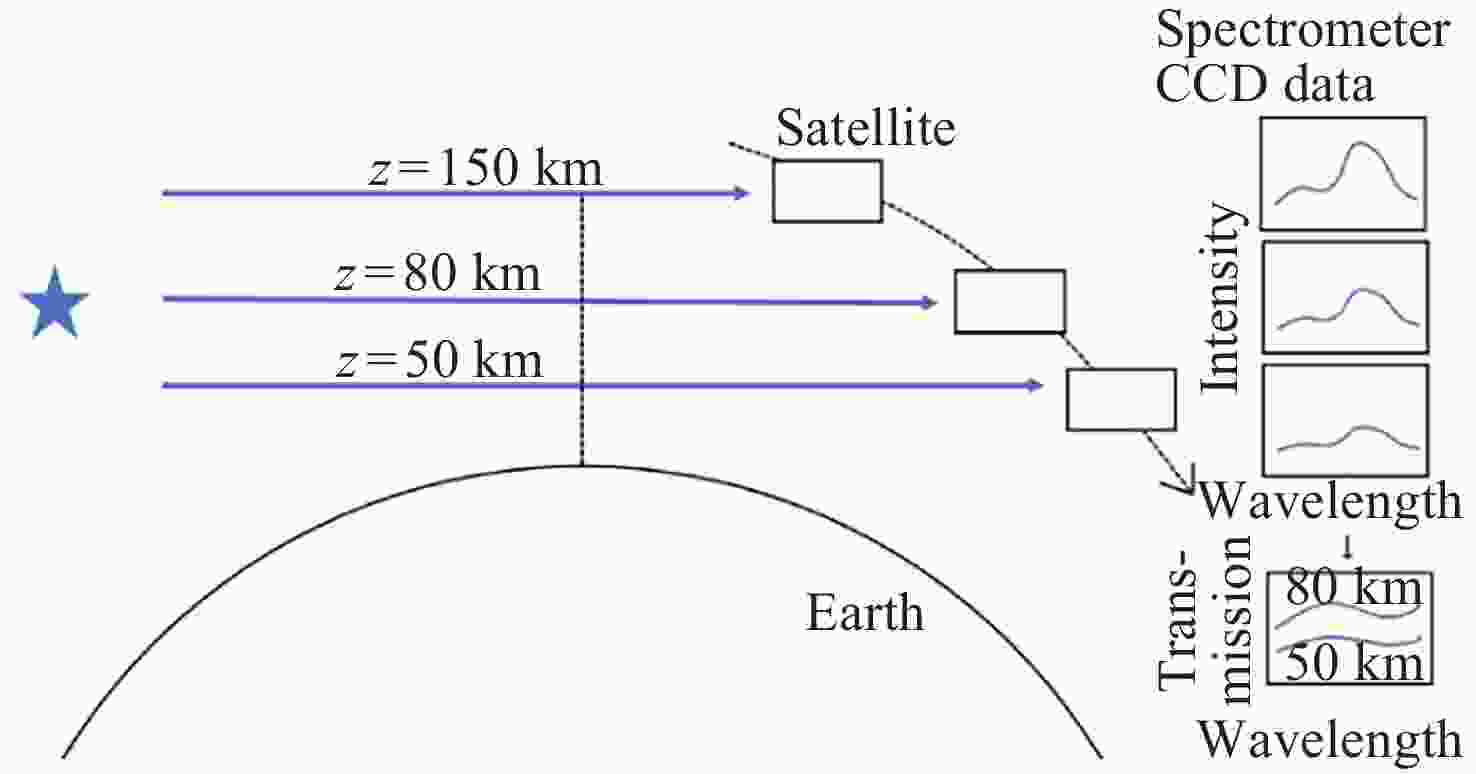
 下载:
下载:


